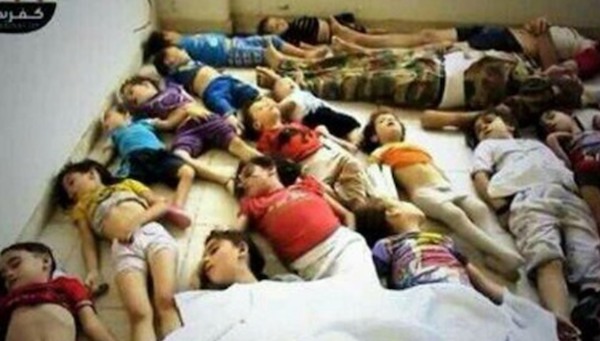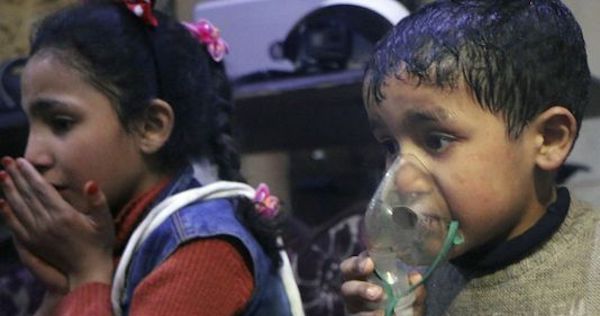At least 42 people died and 500 were injured late Saturday in the town of Douma, many of them while sheltering in basements during an artillery and bombing attack, rescue workers told the Associated Press.
The latest assault is the worst since a sarin gas attack April 4, 2017, which killed 86 people in Khan Shaykhun. Two days after that attack, President Trump launched 59 cruise missiles on a Syrian air base that the U.S. said was used to launch the sarin attack.
Trump and other world leaders condemned Saturday’s incident and said they would respond. Trump tweeted:
“Russia and Iran are responsible for backing Animal Assad. Big price… to pay.”
British Foreign Secretary Boris Johnson called for immediate action. “These latest reports must urgently be investigated and the international community must respond,” he said in a statement.
Johnson said Britain supports an investigation into the reports by the Organization for the Prohibition of Chemical Weapons (OPCW). “Russia must not yet again try to obstruct these investigations,” Johnson said.
The OPCW’s Syria mission has not been authorized since October when Russia vetoed a U.S.-sponsored resolution that would have renewed its mandate. Russia has since moved to undermine the U.N.’s chemical weapons watchdog.
Syria’s chemical attacks continue because they make Assad’s chronically under-manned forces more effective, and the Syrian leader thinks he can use them with relative impunity, said Andrew Tabler, a Syria analyst at the Washington Institute for Near East Policy.
“The reason they’re using it is to amplify the fear and make the military efforts easier so they can declare victory,” Tabler said. And since Russia is running interference for Assad at the U.N., “they think they can get away with it,” he said.”
Many chemical attacks have been documented since the beginning of the Syrian civil war in 2011, according to the United Nations’ Independent International Commission of Inquiry on the Syrian Arab Republic. All the attacks have been attributed to the Syrian government forces loyal to Syrian President Bashar Assad and supported by Russia and Iran:
July 1, 2 and 7, Ayn Tarma, Zamalka, Jowbar — Chlorine was used against Faylaq ar-Rahman fighters, 45 of whom experienced red eyes, profuse nasal secretions, coughing, choking, bronchial secretions.
April 7, Al Hayat Hospital — Two men were admitted with symptoms from a chlorine attack.
April 4, Khan Shaykhun — Sarin gas attack killed at least 85 people and injured hundreds.
March 30, Al-Latamneh — Two bombs injured at least 85 people, including two minors and nine medical personnel.
March 29, Qabun — Three rockets were launched; one released a cloud that smelled like chlorine and injured 35 people, including one woman and two children.
March 25, Al-Latamneh Hospital — A helicopter dropped a chlorine barrel bomb, killing three men and injuring 32 people.
Jan. 30, Sultan al-Mari — A chlorine attack near a front-line position injured 11 men.


